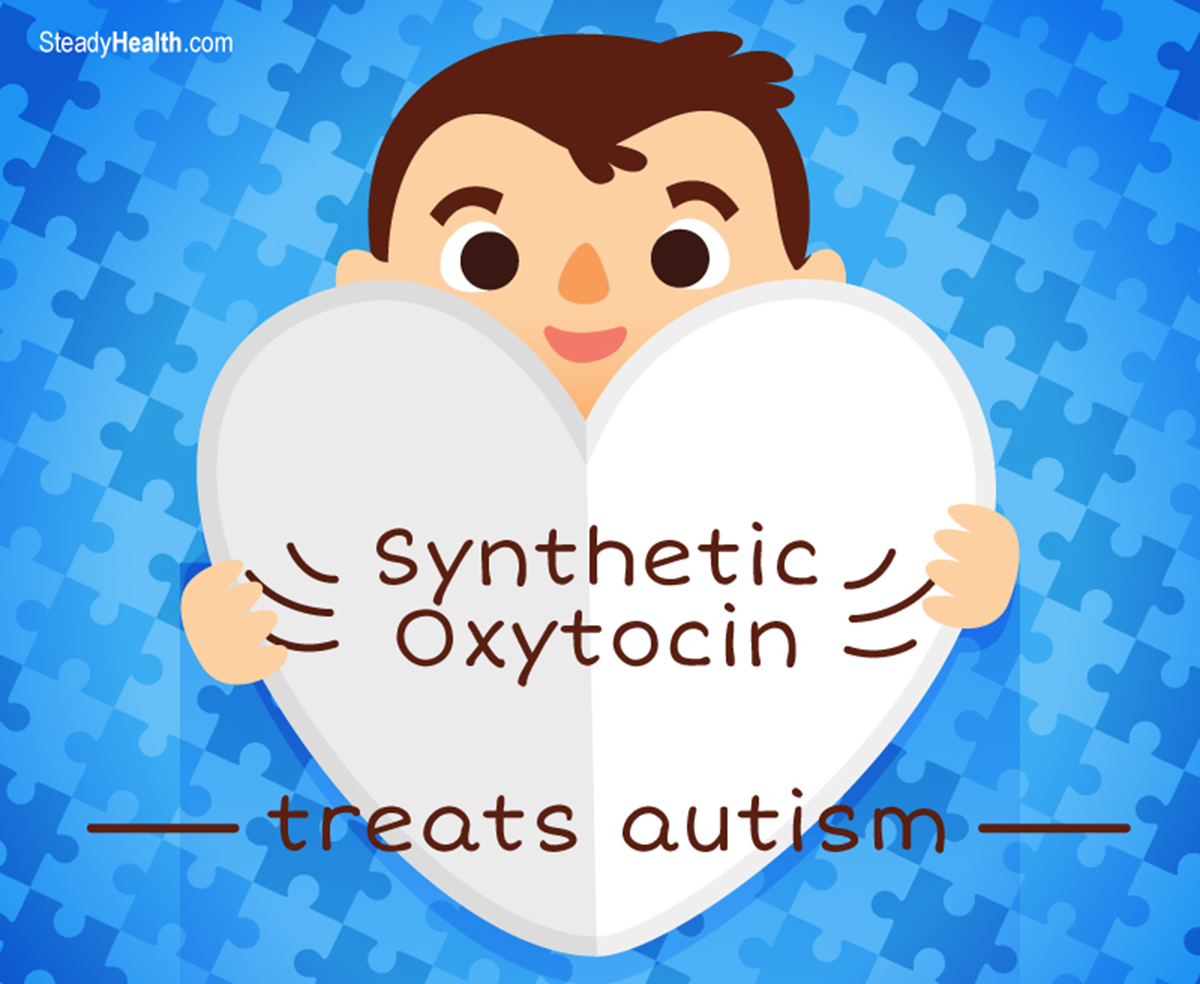Oxytocin has, over the years, gained popularity for its role in enhancing social bonding, promoting fidelity in monogamous relationships, inhibiting the stress hormone cortisol, and in the treatment of mood disorders, anxiety disorders, schizophrenia, and autism.
Pregnant mothers have been encouraged to participate in activities that increase oxytocin levels as a result of this extensive research, thereby curbing the possibility of any of birth defects and disorders that the child may develop later in life.
Even as this research is becoming increasingly well-known even in lay circles, most parents are being skeptical about the potential effects of oxytocin — pondering on one question with an answer that still remains hypothetical — can synthetic oxytocin treat autism?
Recent studies show that the use of synthetic oxytocin can be a revolutionary treatment of social and behavioral challenges that autistic kids face.

Autistic Core Symptoms May Be Pointers to the Treatment Options?
For over three decades, growing scientific research has implied an association between the nano-peptide oxytocin — better known simply as the love and happiness hormone — and autism. There has been building evidence that shows that the use of synthetic oxytocin can treat autism by tackling or regulating several key deficits associated with autism spectrum disorder. [1]
Autism, which is medically known as autism spectrum disorder (ASD), refers to a neurodevelopmental disorder characterized by challenges with restricted and repetitive behaviors, social skills, nonverbal communication, and speech, as well as certain unique abilities and differences, which are caused by different combinations of environmental and genetic influences. [2]
Autism is noted to have the capacity to alter how neurons and their synapses connect, therefore affecting information processing in the brain. [3]
Experts are still uncertain on the cause of autism, but in all likelihood there are different causes of autism rather than just one, as it is the combination of causative factors which includes environmental and genetic factors (which can be leveraged on by other factors creating a high tendency for a child to be born with this neurological difference) that leads to autism. [1]
Synthetic Treatment For Autism
Treatments or therapies for autism are solely focused on promoting sociability and improving behavioral problems. Because there is no apparent identified pathogenesis of autism spectrum disorder, the treatments available to autistic individuals are developed through repeated trial and error. [4]
Nonetheless, some parents whose children are on the autism spectrum strive to provide a solution to their wards even with no evidence based medicine or materials [5]. Some individuals seek a cure for this disorder, while others believe that autism should be not be treated as a disorder, but be accepted as a difference — this is the so-called autism culture. [6]
One study showed that early intervention, diagnosis, and therapy produce positive effects on autistic symptoms, as before preschool age, the brain of the young child is still forming, and can therefore be steered in a particular direction. As such, early intervention will aid children with the best start possible and pave the way for the full development of a child's potential.
The goal of early intervention is to help autistic children learn basic skills like communication skills, social skills, physical skills, emotional skills, and thinking skills. As a result of these kinds of early interventions, three to 25 percent of children suffering from this disorder make much progress as they grow older and the symptoms could disappear with time. [7]
Research has also shown that the use of synthetic oxytocin, a nano-peptide, can curb the symptoms of autism in autistic children if it is used early on. [8]
Oxytocin has received considerable attention as a possible treatment for social deficits in kids suffering from ASD. The administration of intranasal oxytocin has resulted in enhancing empathy, social cognition, and reciprocity in autistic individuals. [9]
In a particular study, 15 adults who were diagnosed with autism and were administered with synthetic oxytocin showed the ability to precisely assign emotional significance to the intonation of speech, allowing them to "read" social cues much better than they would ever be able to without the treatment. This experiment provides preliminary support for the use of synthetic oxytocin to treat autism — linking synthetic oxytocin to pro-social behaviors, and the possibility of facilitating the processing of social information in autistic individuals.
From scientific evaluations, we know that administering oxytocin nasal spray can improve social interaction and communication in young people who have been diagnosed with autism.
Remarkably, the use of synthetic oxytocin to treat autism places the kids in a state in which, through the social reciprocity, joy beclouds their brain, naturally increase oxytocin internally and thereby causing an internal and external therapy to take place. This suggests that early exposure to daily intranasal oxytocin restructures the neural circuits to permanently curbing social impairments in autistic kids.
Side Effects Of Oxytocin Treatment For Autism
A recent report shows that the administration of intranasal oxytocin to children with ASD for more than six months resulted in quality reciprocal communication with no negative side effects. On a few occasions, side effects like nasal congestion, irritability, thirst, urination, constipation, headache, and fatigue have also been reported, likely related to the mode of administration of the treatment. [10] [11] [12]
Regardless, oxytocin is still recognized as a potentially revolutionary treatment for autism in the future, and one that may be far less invasive than other treatments that have been developed to date, as well as much more cost effective.
- Photo courtesy of SteadyHealth.com


Your thoughts on this